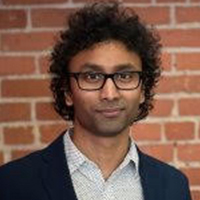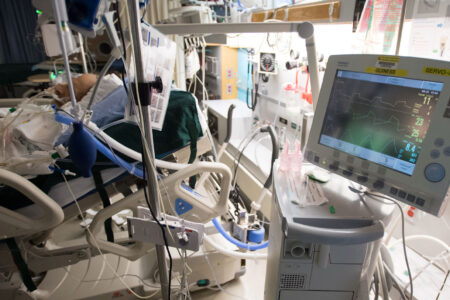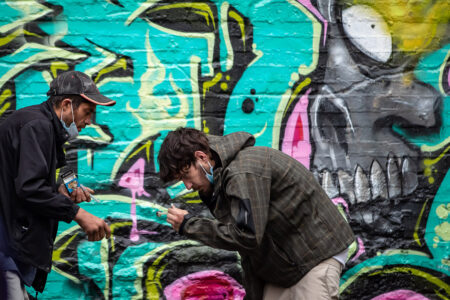
Two friends of mine shared with me recently that they’d caught COVID-19. They said they were no longer ashamed of admitting it. Then, a handful more people I know opened up on social media and in professional settings.
The catch-up calls with friends led me to reach out to eight people to listen to what life has been like for those who have had COVID and survived, but are now living with lingering and cascading effects – perhaps for the rest of their lives.
Canada’s social sector was not prepared. More than 18 months into the pandemic, the dearth of social supports and services is shocking to me. Survivors are in urgent need of recognition, therapies and social services, but they are falling through the cracks in our current social safety net. However, there are programs and services that could serve as examples for what needs to be done.
At the end of October, Canada had reported about 1.7 million coronavirus cases, more than 28,800 deaths, and 1.6 million people who have “recovered.” The people who have recovered tend to go by names like “survivors of COVID,” “COVID long-haulers,” “people with long COVID” and so on. There is no accurate data indicating how many people have fully recovered with no health or social effects whatsoever, versus those who are still living with post-COVID conditions – be they physical-health related, mental-health related or otherwise. While the eight people I spoke with are by no means a representative sample, they mentioned that most people who contracted COVID haven’t had their health, well-being, work and family life return to normal. That leads me to believe that the data on the number of people who have recovered and even the term “recovered” are complex and misleading.
The physical post-COVID conditions I heard about included tiredness, sleep problems, heart palpitations, brain fog, ongoing shortness of breath and joint pain. The mental-health effects included post-traumatic stress disorder, isolation and loneliness, shame, stigma, financial anxiety, and feelings of distress and worthlessness. Then, I heard about the stress effects on co-survivors, or people who are caring for COVID survivors.
Canada’s COVID-19 blind spots on race, immigration and labour
Some people to whom I spoke said that they’d found help through a rehab webinar; some said that they’d found a support group; and a few said they’d found nothing helpful. They all said that social services and supports are grossly lacking, and some said they can’t believe how community organizations and governments have let people down.
I heard that family doctors aren’t equipped with the knowledge or skills to support a COVID survivor. Navigating job loss and finances is a grind. Dealing with the emotions and stigma is hard. Figuring out government income or disability supports isn’t easy. There’s a lack of mental health counselling and stress supports tailored to caregivers and families. Psychotherapists, physiotherapists and other related professionals aren’t equipped with the tools to support recovery. There aren’t enough child care and elder care supports for survivors’ families. And a whole lot more. These are the things that survivors are navigating on their own, every day.
In October, the World Health Organization (WHO) issued a definition for “long COVID,” the term most commonly used to describe the persistent problems that affect survivors. WHO defines long COVID as a condition with at least one symptom that usually begins within three months from the onset of confirmed or probable infection with the virus, persists for at least two months and cannot be explained by another diagnosis. Symptoms may start during the infection or appear for the first time after the patient has recovered from illness. This definition looks at effects on the pulmonary, nervous and cardiovascular systems, as well as psychological effects. Exact numbers on long COVID continue to be difficult to track due to inaccurate reporting and the stigma associated with having it. According to Health Canada, post-COVID conditions include a wide range of new, returning or ongoing physical and psychological problems that people can experience four or more weeks after first being infected. . Even people who did not have COVID-19 symptoms in the days or weeks after they were infected can have post-COVID conditions, they say. These conditions can present as different types and combinations of physical and psychological problems and last for different lengths of time.
Dr. Bram Rochwerg, site lead for the intensive care unit at Juravinski Hospital in Hamilton, Ontario was quoted in a recent CBC article as saying that as patients are getting ready for discharge, there are rarely conversations about “whether…supports were in place for them.” Those supports could include occupational therapy, physical therapy, mental health counselors and others.
On June 30, 2020, Long COVID Canada, one of two post-COVID care centres, submitted a letter penned by a cohort of Canadians who were struck by the virus to elected officials and public health leaders to raise awareness of long COVID symptoms and warning about the symptoms going unchecked and unacknowledged within the Canadian population. Over a year later, according to the organization’s website, most of those who penned the letter are still sick, and they still have no acknowledgement, resources or support.
So, what can be done to help them?
What’s urgently required is a comprehensive suite of programs, services and even institutions within our social safety net tailored to support survivors of COVID. Although it wasn’t mentioned in any of the Community Foundations of Canada Vital Signs reports I read this year, surviving COVID is already having health, social and economic effects in communities – from co-survivor stress to employment adaptation and mental health effects. Social sector inaction will surely exacerbate the situation and, as one survivor told me, “lead to inter-generational trauma and suffering.”
Canada’s social sector has a lot of places from which to learn. Think about the suite of supports for veterans, or HIV programs, or services or supports for cancer survivors. These didn’t come about overnight. It took decades of advocacy, funding and leadership by everyone from social service organizations to elected officials and survivors themselves. This can – and must – be done again for COVID survivors. But we don’t have decades.
If we want to see our communities rebuild in a way that sees everybody flourishing, supporting COVID survivors, co-survivors and survivors’ families has to be high on the to-do list.










